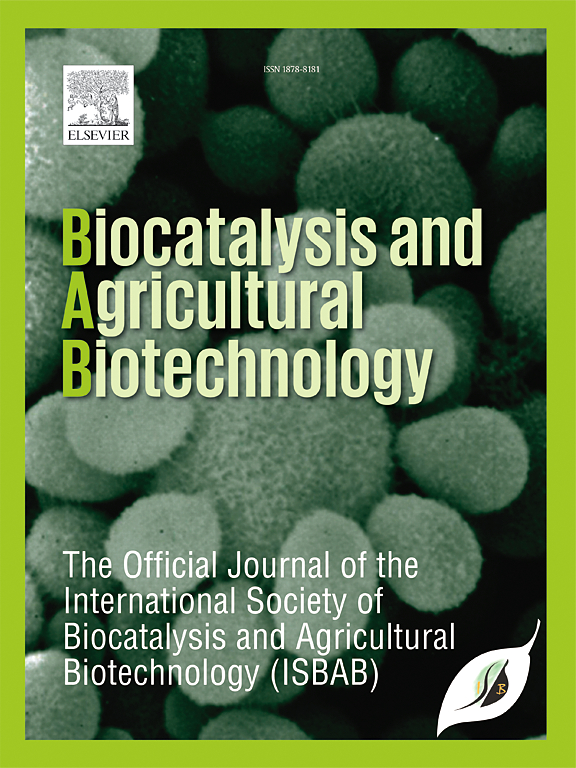Optimization of malachite green degradation with response surface methodology in bio-electro-Fenton system
IF 3.4
Q2 BIOTECHNOLOGY & APPLIED MICROBIOLOGY
引用次数: 0
Abstract
The bio-electro-Fenton system has been recognized as an energy-efficient and sustainable method for treating malachite green (MG) wastewater. In this study, the operational conditions, including pH, voltage, air flowrate, MG initial concentration and Fe2+ concentration, were optimized and evaluated by response surface methodology. The model from response surface methodology exhibited a strong correlation between simulated and experimental values, indicating its accuracy and applicability for predicting system performance. Optimal conditions of pH 3, air flowrate 17 mL min−1, voltage 0.6 V, MG initial concentration 43 mg L−1 and Fe2+ concentration 8 mM were obtained based on the simulated results, along with MG degradation efficiency of 98.9 %. The formation of mature biofilm on bio-anode in bio-electro-Fenton system provided evidence of the stability for long-term operation. Through analysis of intermediates, the degradation pathways of MG were presumed. MG was degraded by two pathways, (i) ∙OH demethylation, the replacement of methyl with H; (ii) ∙OH oxidation, benzene ring was removed and C-C bonds were broken.

响应面法优化生物电fenton系统对孔雀石绿的降解
生物电fenton系统是一种高效、可持续的孔雀石绿废水处理方法。本研究对pH、电压、空气流量、MG初始浓度和Fe2+浓度等操作条件进行了优化,并采用响应面法进行了评价。基于响应面法的模型在模拟值和实验值之间表现出较强的相关性,表明了其预测系统性能的准确性和适用性。模拟结果表明,MG的最佳降解条件为pH为3,空气流速为17 mL min - 1,电压为0.6 V, MG初始浓度为43 MG L - 1, Fe2+浓度为8 mM, MG的降解效率为98.9%。生物电fenton系统在生物阳极上形成成熟的生物膜,证明了该系统长期运行的稳定性。通过对中间产物的分析,推测了MG的降解途径。MG的降解有两种途径:(i)∙OH去甲基化,甲基被H取代;∙OH氧化,苯环被去除,C-C键断裂。
本文章由计算机程序翻译,如有差异,请以英文原文为准。
求助全文
约1分钟内获得全文
求助全文
来源期刊

Biocatalysis and agricultural biotechnology
Agricultural and Biological Sciences-Agronomy and Crop Science
CiteScore
7.70
自引率
2.50%
发文量
308
审稿时长
48 days
期刊介绍:
Biocatalysis and Agricultural Biotechnology is the official journal of the International Society of Biocatalysis and Agricultural Biotechnology (ISBAB). The journal publishes high quality articles especially in the science and technology of biocatalysis, bioprocesses, agricultural biotechnology, biomedical biotechnology, and, if appropriate, from other related areas of biotechnology. The journal will publish peer-reviewed basic and applied research papers, authoritative reviews, and feature articles. The scope of the journal encompasses the research, industrial, and commercial aspects of biotechnology, including the areas of: biocatalysis; bioprocesses; food and agriculture; genetic engineering; molecular biology; healthcare and pharmaceuticals; biofuels; genomics; nanotechnology; environment and biodiversity; and bioremediation.
 求助内容:
求助内容: 应助结果提醒方式:
应助结果提醒方式:


